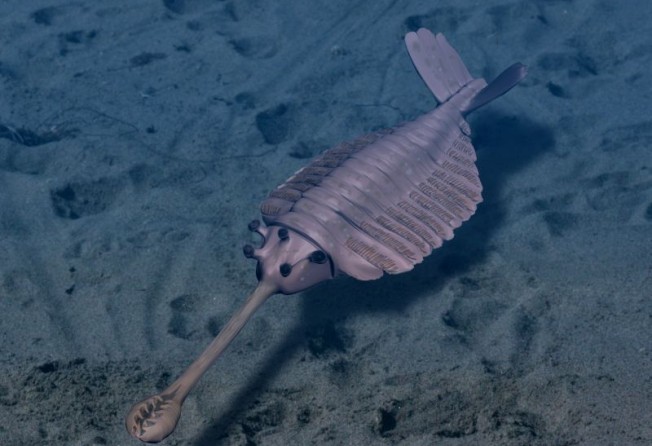
Did animal dung cause the Cambrian explosion? Chinese researchers think so

The appearance of large animals on Earth might owe something to the droppings of their smaller cousins, according to a new study by Chinese scientists.
At an ancient sea bed deposit in Guizhou province, researchers found trace elements of animal dung which they said could be an important trigger for the sudden appearance of large animals more than 500 million years ago during the Cambrian period.
Known as Cambrian explosion, the evolutionary event included the rapid change of life from small, individual cell organisms to large, sophisticated animals with biodiversity almost equivalent to that of today.
What triggered the Cambrian explosion had intrigued palaeontologists for centuries. One popular belief was the increase of oxygen in water, which enabled life forms to grow in size.
But what caused the oxygen increase in the ancient oceans, all the way from the surface to the bottom?
In the latest issue of the Journal of the Geological Society, professor Cai Chunfang and colleagues at the Chinese Academy of Sciences’ Institute of Geology and Geophysics said it could have been a two-step process.
There was an expansion of shallow water areas in the ancient Yangtze ocean, which was part of global tectonic moments during the early parts of the Cambrian period, according to their analysis of trace elements such as nitrogen and carbon isotopes that were abundant near the surface.
In the shallow water emerged small size animals. But the total oxygen level in the ocean was still low, and it was not until a large quantity of waste produced by the small animals descended to the ocean bed did large animals begin to appear.
The droppings not only carried oxygen directly into deep water, but slowed down the oxygen consumption at the sea bed, the researchers said.
The waste could bind with oxygen-hungry elements such as iron to stop them from absorbing oxygen from water, which led to the increase of total oxygen in the world’s oceans.
At Cambrian sites in China, America, Europe and Australia, palaeontologists had discovered giant predators such as the Anomalocaridid, a bizarre shrimp-like creature which could grow to nearly two meters in length with toothy maws and spiny limbs.
The Anomalocaridid appeared in the early Cambrian and remained on top of the food chain for millions of years.